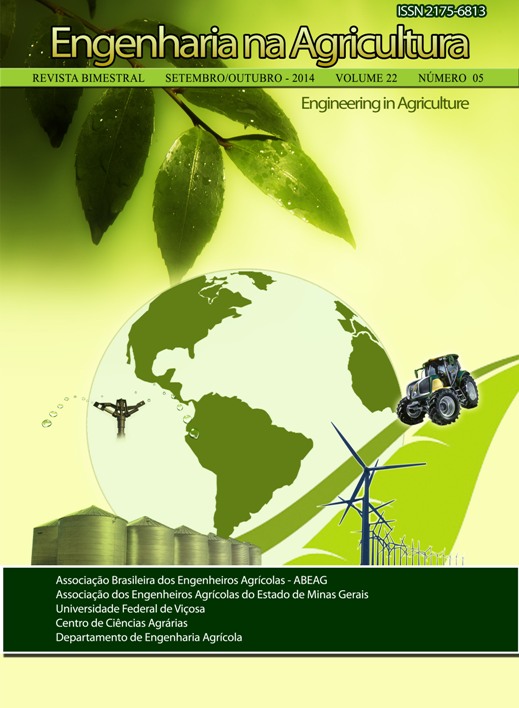SOIL PHYSICAL ATTRIBUTES IN CONILON COFFEE PLANTATION SUBMITTED TO SUBSOILING - DOI: 10.13083/1414-3984.v22n05a03
DOI:
https://doi.org/10.13083/reveng.v22i5.487Keywords:
coffea canephora Pierre, compactação, densidade do solo, porosidade do solo, preparo do soloAbstract
Soil prepation modifies its physical attributes, improving crop development. The objective of this study was to evaluate the residual effect of soil preparation on physical attributes, performed in a Conilon coffee plantation (Coffea canephora Pierre). The experimental area consisted of the following plots: T11, T3 and T7 cultivated with coffee for 11, 7 and 3 years, respectively, which were submitted to subsoiling in the rows during their implantation. Undisturbed samples were taken from the row (P1) and between rows (P2) of the culture at depths of 0.00-0.20, 0.20-0.40, 0.40-0.60 and 0.60-0.70 m. The experiment was set up in a completely randomized, factorial design with three replications. The soil attributes evaluated were bulk density, total porosity, macroporosity and microporosity and soil penetration resistance. Soil bulk density, total porosity and macroporosity showed significant differences between the points up to 0.40 m, with higher total porosity and macroporosity for the point P1 and higher bulk density for the point P2, not differing from the others. There was an increase in microporosity and decrease in macroporosity at increased depths. Among the plots no significant difference was observed, showing that the improvement of subsoil persists over the years for these culture conditions. Penetration resistance differed between points, increasing with depth, and did not differ between plots. A positive correlation was observed between soil density and porosity, while a negative correlation was shown for density and macroporosity, concluding that subsoiling altered soil properties, reduced penetration resistance, and improved growing conditions of the culture.Downloads
Downloads
Published
How to Cite
Issue
Section
License
Authors who publish with this journal agree to the following terms:
The author(s) authorize(s) the publication of the text in the journal;
The author(s) ensure(s) that the contribution is original and unpublished and that it is not in the process of evaluation by another journal;
The journal is not responsible for the views, ideas and concepts presented in articles, and these are the sole responsibility of the author(s);
The publishers reserve the right to make textual adjustments and adapt texts to meet with publication standards.
From submission, the author is fully conceding the paper's patrimonial rights to the publication, but retaining the owner of its moral rights (authorship and paper's identification) according to Creative Commons Attribution-Noncommercial.








 Licensed by
Licensed by 